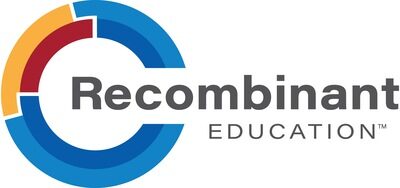STEM Teaching Materials
Browse below for samples of STEM teaching materials that I use in my own courses. Feel free to use these for your own purposes and contact me if you have any questions!
“Please invite Dr. Shaffer to consult with you or your faculty! He’s invested in continuous improvement and evidence-based methods, skilled at translating research to practice, and will renew your excitement for classroom teaching. He’s a rare-find and a gem; consistently delivering the highest quality work while also tending to his students’ and coworkers’ needs.”
Sarah Bodbyl, Associate Dean, Van Andel Institute Graduate School
Lesson Plan Template
Use this lesson plan template to help you put together a lesson that includes active learning activities and lecture all of which are aligned to your learning objectives and pre-class and after-class activities.
Textbook and Courseware Adoption Rubrics
In need of adopting a new textbook or online courseware system for your courses? Take a look at these one-page rubrics which help you compare some of the most critical components of textbooks and courseware systems so as to help you make a decision.
Reading Guides
Reading guides are custom word documents that help students actively read their textbook and take notes on specific sections of the text. Reading guides can also be adapted into “watching guides” by assigning content-based videos instead of a textbook. A prior study of mine has shown that introductory biology students who completed reading guides fully prior to class earned significantly higher exam scores.
Here is a blank template reading guide that you can use to get started. Or you can use the links below to download reading guides for several different textbooks that I use in my own courses. Note that these were designed for my own courses and learning objectives, so you may want to customize them for what you cover.
Check out the Speaking page to learn how you can use reading guides as part of a high structure and active learning course.
- OpenStax Biology 2e
- Campbell Biology in Focus 3e
- OpenStax A&P 2e
- Marieb Human Anatomy, 7e
- Elementary Principles of Chemical Processes, 4e
Case Studies
Case studies are a way of using a narrative or a story to teach a lesson which can deepen interest and learning. There are a multitude of studies published on the benefits of using case studies in the college classroom. Below are links to some of my own case studies that I have published in the National Center for Case Study Teaching in the Sciences.
- Scorpion vs. Mouse (action potential physiology)
- The Sad but True Case of Earl Washington (DNA technology and the justice system)
- From Cow Juice to a Billion Dollar Drug, With Some Breakthroughs in Between (recombinant DNA technology)
- Anencephaly in Yakima: Many Questions, Few Answers (human developmental biology)
PodCases
Podcasts + Case Studies = PodCases! PodCases are my way of introducing students to a diverse array of folks and voices via podcasts while maintaining the narrative power of storytelling that is used to enhance the classroom experience via case studies. Check out the PodCases below and feel free to use them in your courses!
Read more about PodCases on my LinkedIn article here!
Biomaterials – for use in an introductory biomedical engineering course, but could also be used in introductory biology or medical courses – download PPT slides here!
Kinetic energy (PodCase mini) – for use in introductory physics, introductory thermodynamics, or anywhere where you need a quick review of calculating kinetic energy – download PPT slides here!
Biomedical engineering ethics – for use in an introductory biomedical engineering course, but could also be used in introductory biology or medical courses – download PPT slides here!
Kidney Function – for use in an anatomy and physiology or introductory biology course – download PPT slides here!
Heart Anatomy – for use in an anatomy and physiology or introductory biology course – download PPT slides here!
Synapses – for use in an anatomy and physiology or introductory biology course – download PPT slides here!
Muscle Force PodCase – for use in an anatomy and physiology or introductory biology course – download PPT slides here!
Homeostasis PodCase – for use in an anatomy and physiology or introductory biology course – download PPT slides here!
Anatomy and Physiology Activities
Use the following activities to increase engagement with your students in A&P lectures or labs
Plotting Cranial and Spinal Nerve Pathways – Use WikiStix to plot nerve pathways on skeletons
Spirometry personal health activity – An individual or group based activity using the Mir One Spirometer in which students collect and analyze their own spirometry data to compare against modeled predictions
EKG personal health activity – An individual or group based activity using the Alivecor KardiaMobile EKG device in which students collect and analyze their own EKG and heart rate data and make calculation about other cardiovascular parameters
Active learning exercises for teaching the skeletal system – A bunch of strategies to try to make the skeletal system more interactive!
Authentic Assessments
Use the following projects to add authenticity to your courses!
Health and Wellness Project – An authentic assessment to help students connect anatomy and physiology concepts to their own bodies while improving their own health and wellness!
NSF Graduate Research Fellowship Proposal Project – Turning the actual NSF GRFP research proposal into an authentic assessment. Can be used in any STEM course to help students learn how to write succinct proposals!
Predict, Click, Depict!
Try this variation of a clicker question to get fantastic engagement with your students!
Want to learn more about these STEM teaching materials?
Reach out to Justin to schedule a time to chat about ways to partner to improve STEM course design and student outcomes in your program. Justin will work with you and your faculty via workshops, keynotes, seminars, consulting, and more to develop high-impact STEM teaching materials.

